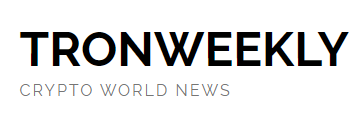You are here: Home / News / Sonic Labs Drops USD Algorithmic Stablecoin Plans, Eyes UAE Dirham Launch

March 30, 2025 by Sheila
- Sonic Labs shifts focus to a UAE dirham-backed stablecoin, avoiding algorithmic risks.
- The UAE’s digital dirham rollout in 2025 influences Sonic Labs’ new stablecoin strategy.
- Regulatory concerns led Sonic Labs to abandon USD stablecoin and opt for UAE dirham.
The blockchain technology firm Sonic Labs dropped its US dollar stablecoin initiative to focus on developing a stablecoin linked to the United Arab Emirates dirham. Sonic Labs revealed its business shift on March 28, 2025 which coincides with the UAE’s forthcoming digital dirham launch in late 2025.
Co-founder Andre Cronje confirmed this pivot on X by explaining that U.S. regulatory obstacles led to their decision. This strategic shift demonstrates the general trend of cryptocurrency organizations adapting their operations based on changes in worldwide financial law enforcement.
We will no longer be releasing a USD based algorithmic stable coin.
Completely unrelated, we will be releasing a mathematically bound numerical Dirham which is settled and denominated in USD, which is definitely not a USD based algorithmic stable coin. https://t.co/NlLsT5IqoE
A week earlier the USD-based stablecoin with an annual percentage rate ranging from 19% to 23% was unveiled. However, he quickly reversed course, stating, “We will no longer release a USD-based algorithmic stablecoin.” Instead, Sonic Labs will introduce a “mathematically bound numerical Dirham” settled in USD. The UAE plans to introduce its blockchain-based central bank digital currency (CBDC) while experiencing a positive environment for dirham-backed digital assets.
UAE’s Digital Dirham Sparks Industry Shift
Governor Khaled Mohamed Balama of the UAE’s Central Bank plans to release its digital dirham currency during the fourth quarter of 2025. According to the Khaleej Times, the director of the Central Bank of the UAE explained how the blockchain-powered currency strengthens financial stability and tackles financial crimes.
To extend its reach, the digital dirham will operate parallel with physical cash in every payment channel. The development has prompted companies like Sonic Labs to align with their offerings with the UAE’s progressive stance on digital finance.
Furthermore, Sonic Labs decided to enter the stablecoin market in response to UAE stablecoin regulation for 2024 which allows AED-backed stablecoins to be accepted as payment methods for goods and services. The authority at the Central Bank restricts algorithmic stablecoins while letting firms create innovative solutions under specific regulations. Tether and Zand Digital Bank joined the expansion of dirham-based stablecoin options in the region indicating an upward trend for digital currencies that use the dirham currency.
Regulatory Hurdles Reshape Stablecoin Landscape
The transition from USD-based algorithmic stablecoins occurred because of increasing regulatory oversight in the United States and Europe. Lawmakers in the US continue developing STABLE Act legislation that limits algorithmic stablecoins for two years while enforcing issuers to maintain 1:1 reserve ratios. The European Union enacted the MiCA regulations to ban stablecoin models after Terra collapse depleted billions in 2022. Sonic Labs chose a different strategy to avoid regulatory barriers by creating a stable and regulatory-compliant platform.
Moreover, Cronje’s dirham-based stablecoin solves the problems of algorithmic designs by using mathematical principles to establish its value instead of market algorithms. The strategy combines regulatory adherence to upcoming guidelines with support for UAE crypto-friendly policies.

 2 days ago
25
2 days ago
25







 English (US) ·
English (US) ·